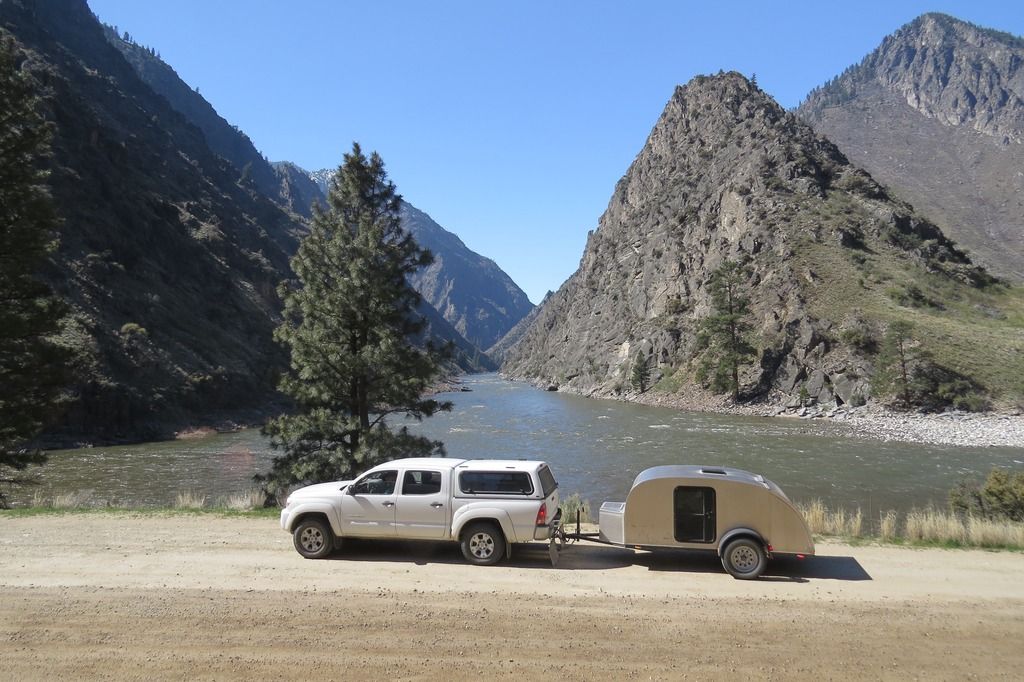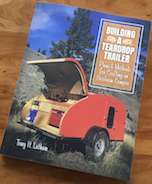Hey all,
New to the site and have been pouring over all of this great content...incredible. I've got a few general questions if you don't mind.
1. Foamie? Standie? I think I know what you are all talking about but wouldn't mind some clarification. And if a foamie is what I think it is, how on earth do they stay together?
2. What is the purpose of wrapping your teardrop in canvas?
3. This next question is puzzling me the most...why do most of the designs not build around the tires allowing for more interior floor space and overall room? Is it merely an esthetic thing? Does it have to do with nominal plywood coming in 4 and 5 foot widths?
4. Is a roof vent a must? Pros/cons?
I think that will do me for now...appreciate any feedback, and again, this is a great forum that you all should be proud of.
Sent from my iPad using Tapatalk
New guy here interested in a few particular design terms
6 posts
• Page 1 of 1
Re: New guy here interested in a few particular design terms
J5:
Welcome.
Your second question answers your first. (It think). But I'm not a foamie guy.
3. This next question is puzzling me the most...why do most of the designs not build around the tires allowing for more interior floor space and overall room? Is it merely an esthetic thing? Does it have to do with nominal plywood coming in 4 and 5 foot widths?
Assuming I understand your question: If you want a 5-wide teardrop, use a trailer with an axle that sits outside of your cabin so your fenders don't take up space inside––but some build a 5-wide on a 4-wide trailer to save money (I think).
4. Is a roof vent a must? Pros/cons?
I had a commercially made teardrop without a roof vent. After owning one with a Fantastic fan, I couldn't imagine having one without.




Tony
Welcome.
Your second question answers your first. (It think). But I'm not a foamie guy.
3. This next question is puzzling me the most...why do most of the designs not build around the tires allowing for more interior floor space and overall room? Is it merely an esthetic thing? Does it have to do with nominal plywood coming in 4 and 5 foot widths?
Assuming I understand your question: If you want a 5-wide teardrop, use a trailer with an axle that sits outside of your cabin so your fenders don't take up space inside––but some build a 5-wide on a 4-wide trailer to save money (I think).
4. Is a roof vent a must? Pros/cons?
I had a commercially made teardrop without a roof vent. After owning one with a Fantastic fan, I couldn't imagine having one without.




Tony
-

tony.latham - Gold Donating Member
- Posts: 7074
- Images: 17
- Joined: Mon Jul 08, 2013 4:03 pm
- Location: Middle of Idaho on the edge of nowhere


 ... They are Lightweight , inexpensive , and require no special tools , designed to be able to be built ( and towed ) by most anybody . They are a lot cheaper than comparable trailers , but are not as shiny ... ( canvas/fabric covered) Made for Camping , sometimes called a "Hard tent" ... and with little to Rot the maintenance is very low ... for more information , go to the Foamie section below ... Much Friendly help and assistance is available for those who ask ...
... They are Lightweight , inexpensive , and require no special tools , designed to be able to be built ( and towed ) by most anybody . They are a lot cheaper than comparable trailers , but are not as shiny ... ( canvas/fabric covered) Made for Camping , sometimes called a "Hard tent" ... and with little to Rot the maintenance is very low ... for more information , go to the Foamie section below ... Much Friendly help and assistance is available for those who ask ... 
